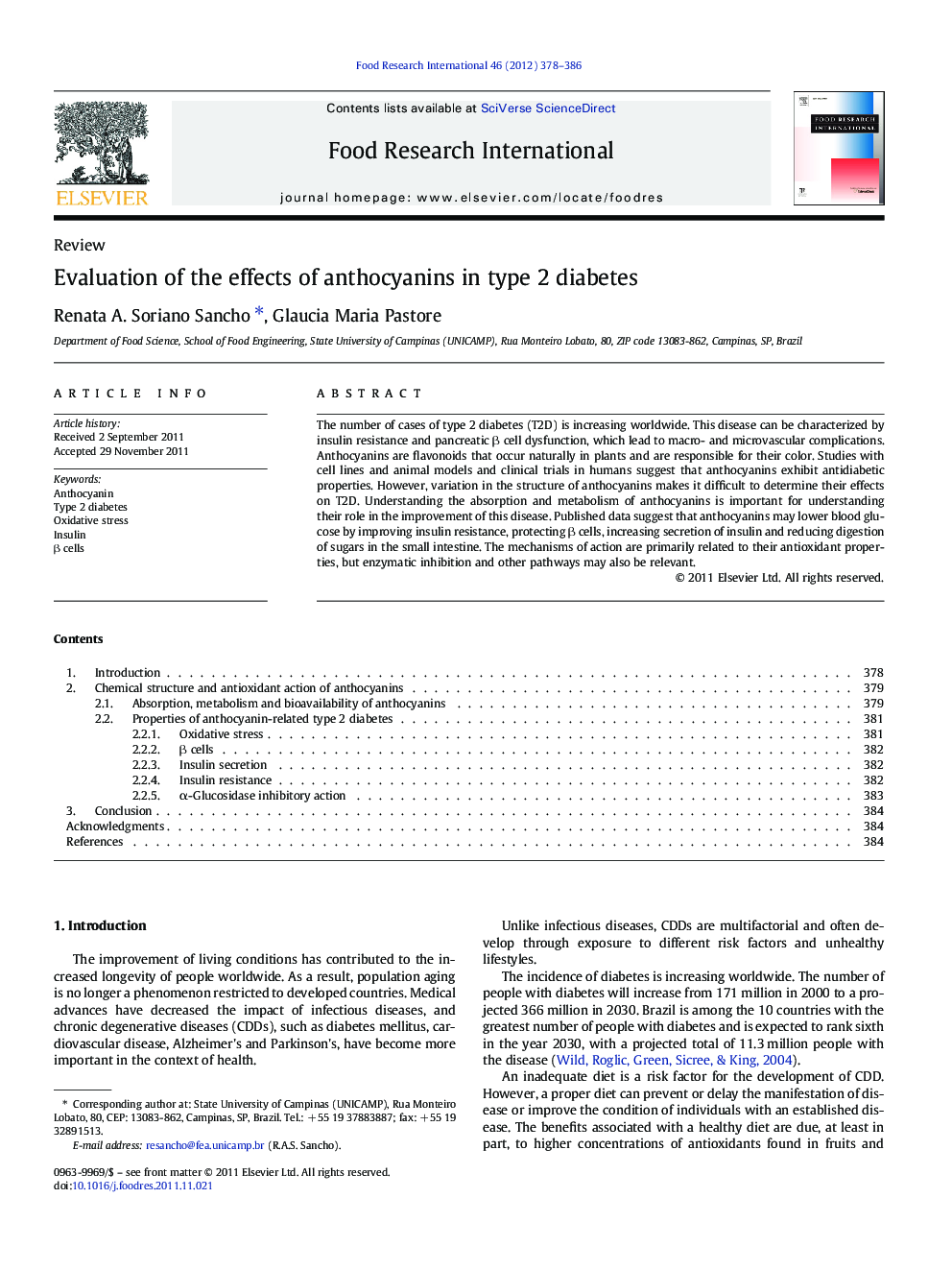| Article ID | Journal | Published Year | Pages | File Type |
|---|---|---|---|---|
| 4561924 | Food Research International | 2012 | 9 Pages |
The number of cases of type 2 diabetes (T2D) is increasing worldwide. This disease can be characterized by insulin resistance and pancreatic β cell dysfunction, which lead to macro- and microvascular complications. Anthocyanins are flavonoids that occur naturally in plants and are responsible for their color. Studies with cell lines and animal models and clinical trials in humans suggest that anthocyanins exhibit antidiabetic properties. However, variation in the structure of anthocyanins makes it difficult to determine their effects on T2D. Understanding the absorption and metabolism of anthocyanins is important for understanding their role in the improvement of this disease. Published data suggest that anthocyanins may lower blood glucose by improving insulin resistance, protecting β cells, increasing secretion of insulin and reducing digestion of sugars in the small intestine. The mechanisms of action are primarily related to their antioxidant properties, but enzymatic inhibition and other pathways may also be relevant.
► Diabetes mellitus is a global health problem with an increasing number of cases. ► Anthocyanins are naturally occurring flavonoids with antidiabetic properties. ► The mechanisms of action are primarily related to their antioxidant activities. ► Studying their metabolism is essential for assessing the potential therapeutic role.
